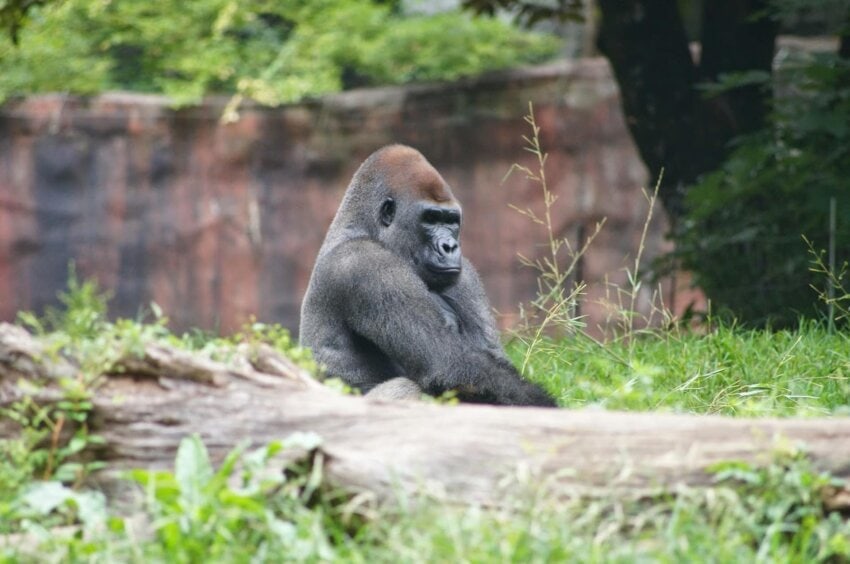Gorillas are the world’s largest living primates and share more than 98% of our genetic code, making them one of our closest relatives. They live in packs with a complex social structure and exhibit behaviors that most of us can recognize from interacting with our own families. Despite (or perhaps because of) the similarities between our species and theirs, all African gorillas are endangered or critically endangered. Endangered by habitat destruction, poaching, and disease, seeing them in the wild is a privilege that future generations may never have.
This article is not an exhaustive list of all the countries that are home to gorillas, but rather a recommendation of the best places to successfully hike for gorillas.
Different kinds of gorillas
There are two kinds of gorillas: eastern gorillas and western gorillas. These two species are divided into subspecies, the most common of which are the western plains gorilla, the eastern plains gorilla or Grauer’s gorilla, and the mountain gorilla. The western lowland gorilla is the smallest, most numerous, and most common subspecies of gorillas. It lives in the lowland forests and swamps of Central Africa, including Cameroon, Gabon, the Central African Republic, and the Republic of the Congo. About 100,000 western lowland gorillas remain in the wild.
The Grauer’s gorilla is the largest gorilla subspecies found only in the Democratic Republic of Congo (DRC). There are thought to be fewer than 4,000 living in the mountain forests of the eastern part of the country. Mountain gorillas are even smaller: just over 1,000 individuals divided into two separate populations. One is in the Virunga Mountains (accessible from Rwanda, Uganda or the Democratic Republic of Congo) and the other is confined to the impenetrable Bwindi National Park in Uganda.
What to expect
Wherever you decide to go on a gorilla trek, it’s important to remember that you’ll have to work hard to find troops, and sightings are never guaranteed. All gorilla species have learned to stay as far away from humans as possible, and the journey to find them usually involves several hours of hiking through dense vegetation. Expect plenty of waiting and be prepared for stinging insects and intense heat. However, the accustomed troops are used to human visitors, so when you find them, you can get quite close, allowing you to have an incredible encounter that is worth it.
Rules and Regulations
Because gorillas are very vulnerable, human interaction is strictly regulated to minimize exposure and ensure the safety of all involved. You’ll need a gorilla permit (your tour operator should arrange this for you – expect it to cost anywhere from $400 in the Democratic Republic of Congo to $1,500 in Rwanda). Only a certain number of daily permits are issued for each location, so booking as early as possible is recommended. The rules may vary slightly from country to country, but generally resemble the following recommendations from the Rwanda Development Board:
– To minimize the possible transmission of diseases to humans, visitors are asked to stay 7 meters (about 22 feet) away from the gorillas. If you have a cold, flu, or other communicable disease, please do not visit the gorillas.
– Viewing time is limited to one hour.
– Maximum of eight visitors per group.
– Spitting is strictly prohibited in the park.
– If you need to cough, cover your mouth and turn away from the gorillas.
– When you are with the gorillas, speak softly.
– Try not to make quick movements that might scare the gorillas.
– If a gorilla lunges at you or starts screaming, don’t be frightened, stand still, look away from the gorilla and follow your guide’s directions.
– Don’t litter.
– Do not use a flash to take pictures.
– Tracking can be done by persons 16 years of age or older.
Best places to see mountain gorillas
Uganda
There are two places to hike for gorillas in Uganda. The first and most popular is the impenetrable Bwindi National Park. This UNESCO-recognized reserve covers 321 square kilometers of dense, mist-filled rainforest thought to be more than 25,000 years old. About half of the world’s mountain gorilla population resides here, including nine tracked or roosted individuals.
A second, less visited option is Mgahinga Gorilla National Park, located in the extreme southwestern corner of the country on the slopes of the Virunga Mountains. It borders Rwanda and the Democratic Republic of Congo and has a total area of just under 34 square kilometers and is the smallest national park in Uganda. It is home to one flock of gorillas.
Rwanda
Visitors to Rwanda can watch gorillas in Volcanoes National Park. Located in the northwest of the country, the park covers 160 square kilometers in the Virunga Mountains and is known as the place where gorilla scientist Diane Fossey worked and died. The forest is easier to navigate than Bwindi, and you can find 10 gorilla bands used to gorillas here.
The best places to see the gorillas of Grauer
Democratic Republic of Congo.
Rwanda and Uganda are safer choices for those who want to see mountain gorillas, but the DRC is the only option for those looking for the endemic Grauer’s gorilla. They live in the primary rainforests of the east and are most reliably found in Cahuzi-Biega National Park (a UNESCO World Heritage Site) and Maiko National Park.
Best places to see gorillas of the Western Lowlands
Republic of Congo
Located in the north of the country, Ozala-Kokua National Park was once home to more than 22,000 western lowland gorillas. The population was decimated by the Ebola outbreak in the early 2000s, but has since recovered, so the park remains the number one place to see the species. There are two units that can be tracked by hikers.
Gabon
Many of Gabon’s 13 national parks are home to plains gorilla populations. The first park to attempt to tame a flock of gorillas was Mukalaba-Doudou National Park, and tourists can now track them deep into the forest on foot. Other gorilla parks include Ivindo and coastal Loango National Park, although tourism infrastructure in both places is minimal.













